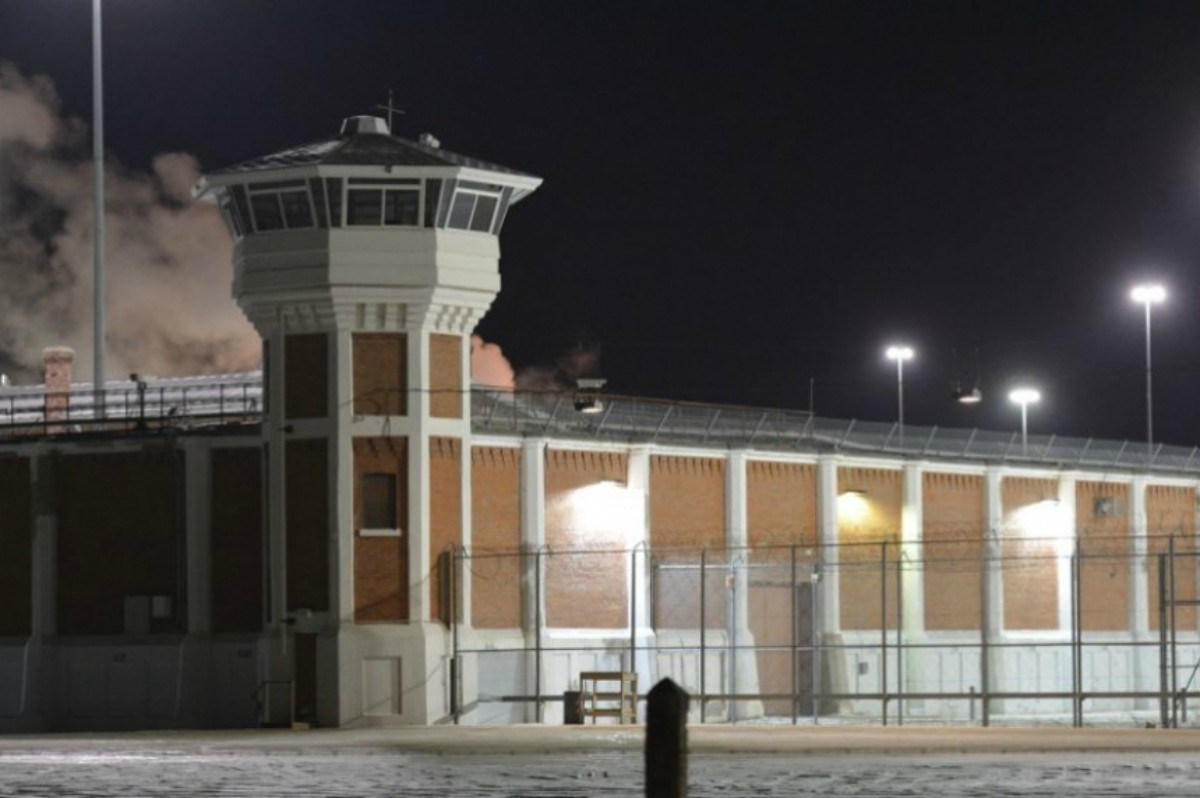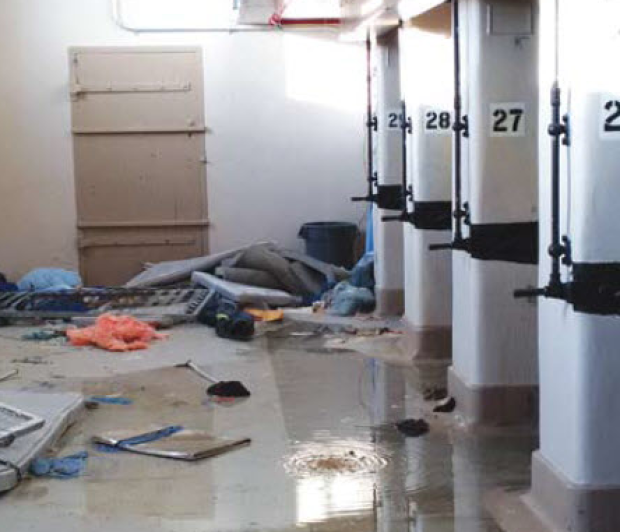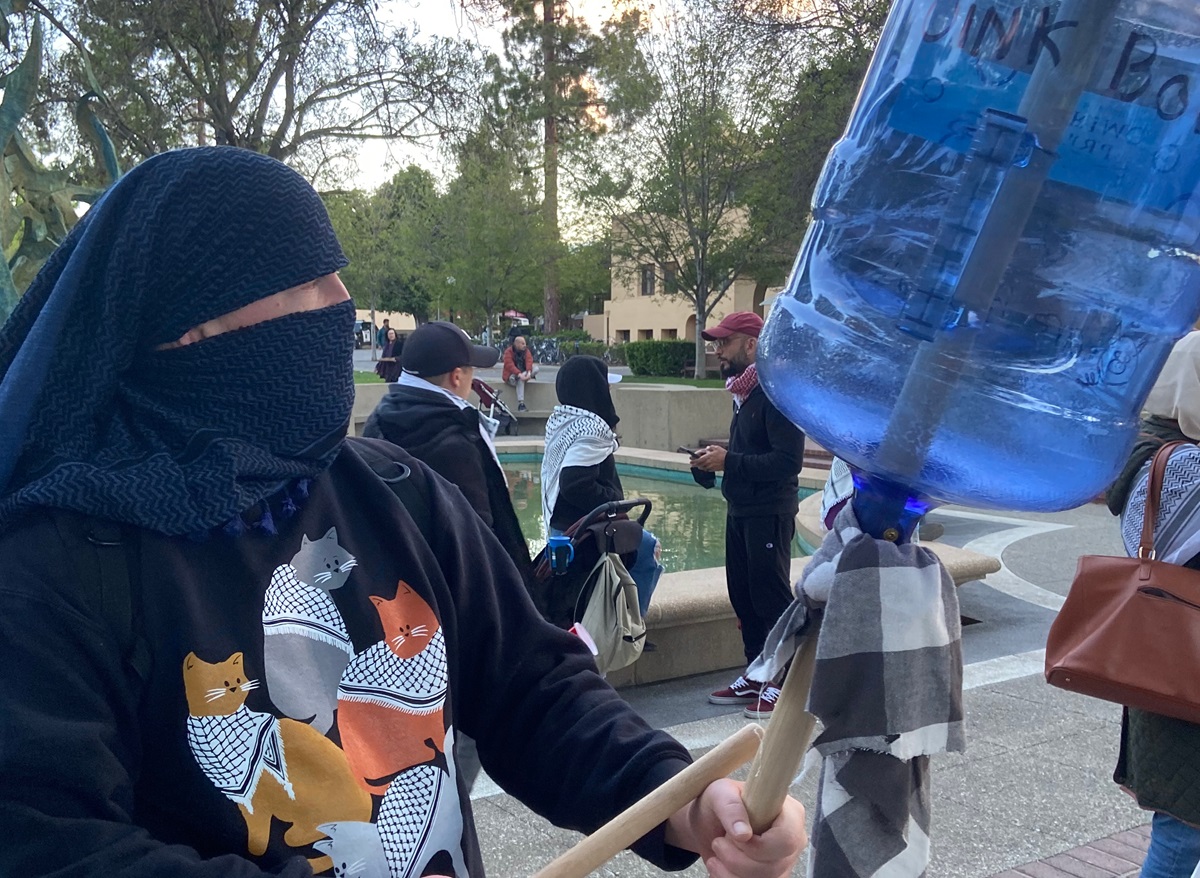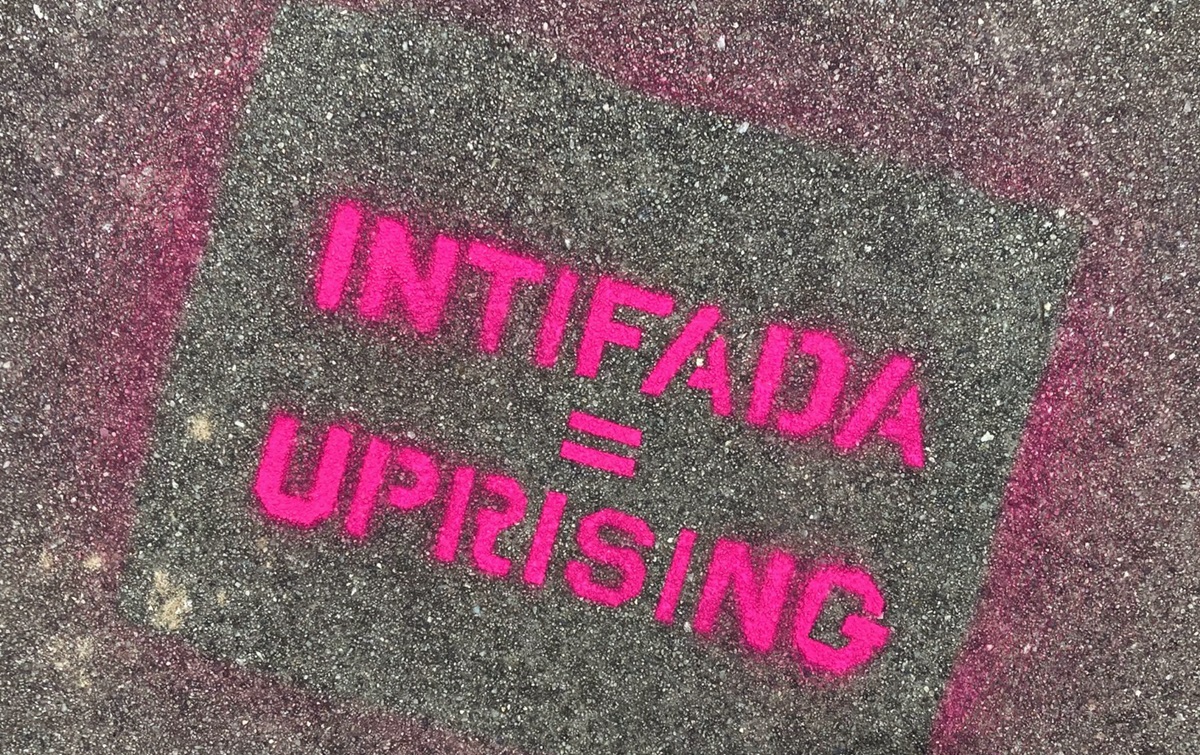Filed under: Action, Bloc Party, Canada, Featured, Incarceration

“When I talked to this inmate and from letters and Facebook messages I’ve received, they said this was one of the rankest riots they’ve ever seen. It’s definitely one for the books, is what their exact words were.” – Sherri, Beyond Prison Walls Canada
On December 14, 2016, at least 185 prisoners at the Saskatchewan Penitentiary in Canada refused to attend their normally-scheduled activities and instead masked up, destroyed surveillance cameras in the area, erected barricades, set fires, destroyed significant portions of the prison and smashed a hole in the floor so they could move to different units. The Correctional Service Canada has since estimated the damages to the prison at approximately $3.6 million. Six prisoners were shot with live ammunition by guards during the uprising, but all survived.
One prisoner, Jason Leonard Bird, was stabbed to death during the riot, but no murder charges have been brought at this point. According to Global News, “Police said the investigation into Bird’s death is ongoing.”
Today marks the one year anniversary of the uprising at Saskatchewan, so we thought we’d take a moment to review the event and give a little bit of an update on the repression that followed.
Uprisings may end when the CERT (Correctional Emergency Response Team) or the National Guard rolls in and re-imposes a repressive order, but the reverberations continue for years. As people interested in strengthening our capacity to sustain powerful uprisings, we must maintain our attention on these events long after their spectacular stage has come to an end. Props to those with MAPS in Michigan who continue to keep the focus on the repression against those involved in the Kinross uprising of September 2016 and, on a slightly different note, those in St. Louis and elsewhere who continue to keep up with those serving long jail sentences for the uprisings in Ferguson, Missouri. Take a minute to drop a line on some of these rebels or send some money to support them during their incarceration.
According to CFRC Prison Radio, the uprising at Saskatchewan Penitentiary was a result of a gradual escalation of tactics on the part of prisoners:
“At Canada’s most complained about prison, amidst a months-long dispute about food quality and portion sizes, things escalated from a grievance, to a kitchen strike, to a work strike, to a refusal to lockup, to a full-blown riot. Every step of the way the cold indifference and refusal to address concerns on the part of the prison bureaucracy aggravated the situation and made it clear ‘negotiations’ were going nowhere.”
Shortly after the uprising, CFRC Prison Radio did an interview with Sherri, who runs Beyond Prison Walls Canada and a prison wives support group on Facebook. Sherri had been following the protests as they developed and gave a run down of how things escalated:
“It started with the kitchen but I know that before they rioted they said ‘OK, well if things don’t change, we’re not going to work the kitchen, we’re not going to work the canteen, we’re not gonna do nothing.‘ So they were threatened, [CSC] said ‘If you guys don’t go to work … we’re going to take away your inmate social,’ which is just before Christmas, and they have Santa there and it’s good, they look forward to that. They were going to take that away from them, they were going to take their Christmas canteen, which they get extra stuff at Christmas time that they normally wouldn’t get. Actually they threatened to take all the canteen away from them. That’s where I guess the inmate committee and staff decided to have another meeting and nope, nothing changed again. And then they’d had enough of all their threats and that’s when the riot broke out. What started as a peaceful protest led to the riot because the guards came in with guns.”
According to Correctional Services of Canada’s “Chronology of Events” of the uprising, at approximately 1:15 pm, “Inmates from a number of ranges in the medium security sector of the institution refuse to attend work, programs or school.” And at 1:30 pm, “Inmates on ranges E 1, 2, 3 and 4 tie off the range barriers with institutional blankets and clothing, barricade the barriers with fridges, washers and dryers in front of the range doors. Inmates cover their faces and destroy range cameras.”
The prison security forces attempted to intervene in the uprising, and by 2:10 pm “Inmates make weapons, dismantle beds, damage walls, breach an interior wall, smash windows and generally destroy property.” An hour later, “Inmates on F4 start fires on the range.” At 7:25pm, approximately six hours after the uprising began, “The Institution is declared secure.”
In her interview, Sherri describes the uprising as well, as told to her by inmates involved:
“The inmates had made barricades, but the guards were cutting through them with tools like the jaws of life. They said the guards were shooting bullets at the floor, which would ricochet and hit inmates. They sprayed their gas guns, which ended up having guys pass out. They had inmates eventually lay in their cells with their hands behind their heads and their faces down to the ground, and then they put flashbangs, which are like a grenade, into the cells. On unit E3 and E4, there was a hole shot into the floor, and the inmates were getting shot at. The inmate I talked to said that one of his friends was shot in the leg so bad that it tore a piece of his back leg off. Another one got shot in the knee which wrecked his kneecap…During the riot, the guards smashed the inmates TVs and destroyed their clothes. I mean yeah, the inmates did break stuff. There was one unit where the toilets were busted, the sinks were broken. There was actually one unit – and I think it was from guards shooting at the floor – where you could actually see into the other units below. So inmates were jumping down through the floor into the next unit. One of the inmates was shot and hit with a guards billy stick so bad that they ended up breaking his forearm and a few fingers.”
Sherri describes the uprising as “all over the food,” since those were the first grievances the protests that proceeded the riot focused on, but as always, there is much more to it than that. In a surprisingly candid report released in November, Correctional Services Canada’s (CSC) correctional investigator, Ivan Zinger, stated “a lot must go wrong, and for quite some time, before a prison erupts in violence.” He goes on to describe the inhumane conditions he found in his visit to the prison:
“In search of some other plausible explanation for the incomprehensible violence and mayhem beyond bad or inadequate food, I noted that some of the cells in that forbidding and antiquated facility housed two inmates even though there is barely adequate space for one. Standing in the middle of another cell, I could reach out and touch the sides of both walls. Long after the rage of the riot had been quelled, a palpable sense of tension lingers in that facility. I could not help but notice that the overwhelming majority of its occupants are young, desperate Indigenous men. To my mind, the year-on-year increase in the over-representation of Indigenous people in Canadian jails and prisons is among this country’s most pressing social justice and human rights issues.
One can imagine the sense of futility and despair such environments and conditions of confinement elicit from people who are often mentally unwell, or whose lives have been touched or marked by some combination of alcohol or drug addiction, family dysfunction, discrimination, poverty, childhood violence, abuse or trauma. Elevated rates of prison self-injury and suicide, high prevalence of mental illness and premature natural mortality behind bars speak to the unremittingly high costs of imprisonment for some of Canada’s more vulnerable populations.”

“Standing in the middle of the cell I could reach out and touch both sides of both walls.” Ivan Zinger. (Photo: Correctional Service of Canada)
He goes on to write that the more than 100-year-old prison is “not conducive to modern and humane correctional practice.”
Despite those concerns, Correctional Service Canada has stated that it has no plans to stop incarcerating people in that “forbidding and antiquated” prison.
In relaying these descriptions of the inhumane conditions at Saskatchewan Penitentiary, we are not advocating for modern and compassionate imprisonment, nor are we saying that prisoners who are not facing overtly disgusting conditions of confinement do not have valid reasons to rebel. What we are saying is the caging of human life is a horror and those who seek to maintain their humanity must not look away when confronted with descriptions of these modern-day Bedlams.
Additionally, if we seek to understand more deeply what compels humans to rebel against their “poor butchered half-lives,” it is useful to trace patterns of behavior from their beginning point in a context. In the case of prison uprisings, that context very often involves overcrowding, under-staffing, shitty prison food, outdated facilities, bad relationships between administration and guards, unpredictable or changing rules and expectations on prisoners, and a politicized prison population well supported by radical movements on the outside. These conditions can be tracked and intervened upon.
According to CFRC Prison Radio, in the aftermath of the riot, approximately “200 prisoners were transferred to maximum security units across the three prairie provinces, with many facing lockdowns for weeks and serious institutional charges.”

Saskatchewan Coalition Against Racism (SCAR) rally in Regina, Saskatchewan (Photo: Brian Fitzpatrick, Regina Leader-Post)
The groups Saskatchewan Coalition Against Racism and Colonialism No More have held demonstrations and attempted to advocate for the prisoner’s demands.
In September of this year, Royal Canadian Mounted Police (RCMP) released charges against 14 prisoners related to the uprising. According to Global News, those “charges include participating in a riot, obstructing justice, rioting while wearing a mask, wearing a disguise with intent and criminal mischief over $5,000.”
Those charged with these august crimes are Dylan Ahenakew, 22, Donavon Assiniboine, 22, Skylar Alexson, 24, Brett Babisky, 28, Lance Bear, 29, Julius Beardy, 26, Vernon Bigsky, 31, Taryn Cote, 23, William Fick, 28, Wesley Hassleberger-Wright, 20, John Linklater, 19, Josh McLaren, 27, Scott Nelson, 32, and Larry Windigo, 35.
For more information on the riot, check out CFRC Prison Radio’s full length interview with Sherri in audio or zine format. To keep up with what’s going on with prisons in Canada, keep an eye on Beyond Prisons Canada and CFRC Prison Radio.
If you are in touch with anyone at Saskatchewan Penitentiary or have more information you’d like to share about what’s going on up there, drop us a line.
In an effort to broaden Bloc Party coverage of happenings across borders, over the coming weeks we plan to share more on the history of prisons in Canada as well as an interview with some anarchists who are engaged in supporting prisoner resistance and rebellion. Keep an eye out for those upcoming articles.






